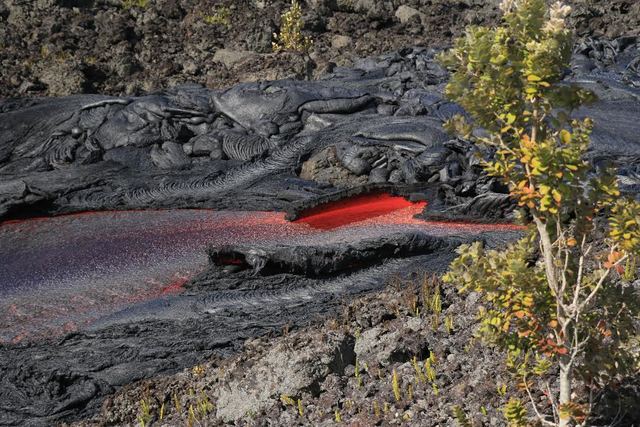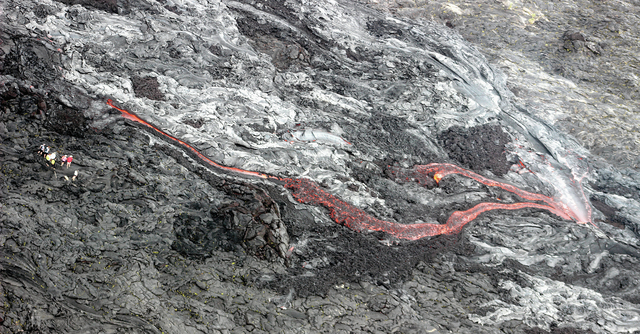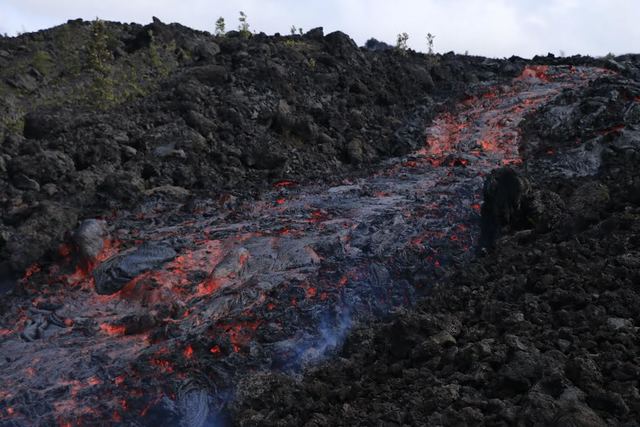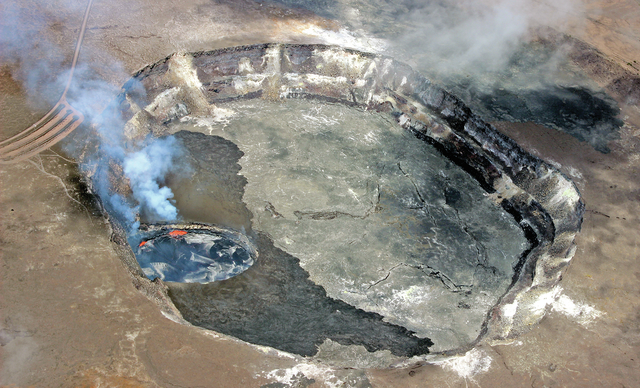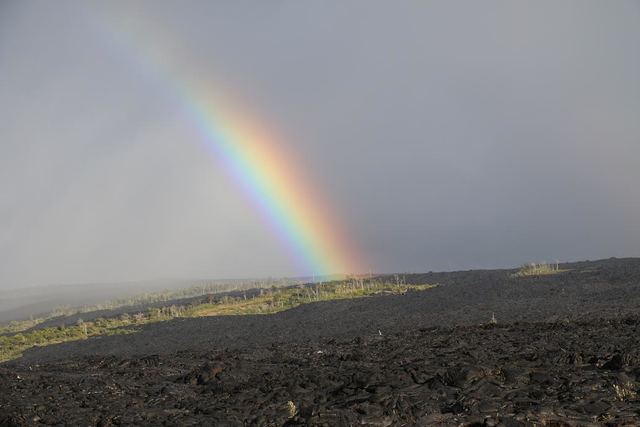The latest lava flow from Kilauea’s Puu Oo vent has begun to peek over the pali, providing curious onlookers an early glimpse of its glow from Kalapana. ADVERTISING The latest lava flow from Kilauea’s Puu Oo vent has begun to
The latest lava flow from Kilauea’s Puu Oo vent has begun to peek over the pali, providing curious onlookers an early glimpse of its glow from Kalapana.
“It should be visible from tonight now on, I think,” said David Ford, who first saw a “small, little red dot” on the distant hillside Friday evening.
Others reported similar sneak peeks, aided by binoculars, on social media during the weekend.
“You can tell there’s lava up there,” Ford said. “It’s hard to tell exactly what’s happening.
“I assumed what I saw was just the early stages of the flow.”
Ford, who hiked several hours to the flow’s leading edge Sunday, said lava is entering the abandoned Royal Gardens subdivision that was inundated by earlier flows from the vent starting in the 1980s.
The 57-year-old Orchidland resident said he grew up there in the 1970s. But the homes are now long gone, with only a few short segments of road left untouched from the repeated intrusions.
“Mainly it’s like going to see an old friend or going to a cemetery,” he said.
Ford said the flow’s front was about 20-30 feet wide and was entering a gully bordered by earlier a‘a flows.
He said he was by himself except for the occasional tour helicopter.
“I don’t want to encourage people to hike that far,” Ford added, noting the trip took 2.5 hours each way over rough, open terrain. “The main thing is be prepared.”
He advised residents who want to get a better look to wait until it gets close to the emergency road that follows the former Highway 130/Chain of Craters route.
Civil Defense officials are asking people not to traverse off that road in search of lava for their own safety and to avoid trespassing on private land.
A viewing area near Kalapana is being established, and the emergency route that parallels the coastline will remain open to hikers as long as it remains safe.
The flow’s glow might also become visible from Hawaii Volcanoes National Park.
But county and park officials have offered differing advice on who has the best viewing area.
Last week, county interim Civil Defense Administrator Ed Teixeira said the national park is the prime spot. Park Superintendent Cindy Orlando said the county side, where the highway comes to an end, is closer.
“Right now, with the anticipated flow path, the easiest place to view it is from the county side,” she said, noting the parking area at the end of Chain of Craters Road is about 5 miles from the flow.
Orlando said she expects to see an increase in visitors, mainly from island residents, if lava does come into view.
Meanwhile, Kilauea’s summit lava lake inside the park continued to rise Monday, potentially offering another attraction.
Hawaiian Volcano Observatory said the lake was 27 meters (about 90 feet) from the crater floor with some spattering visible from the observatory, located on the edge of the volcano’s caldera. That’s a change of about 13 meters from a week ago.
HVO has said the lake comes fully into view when lava is about 20 meters below the crater rim.
Email Tom Callis at tcallis@hawaiitribune-herald.com.


